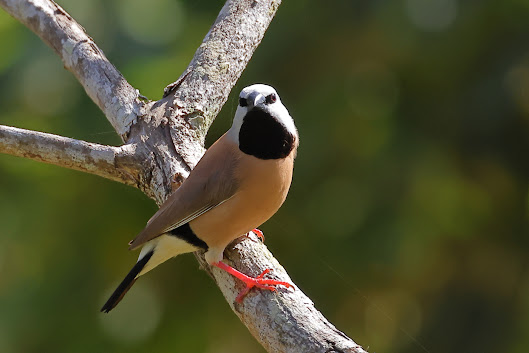Too much to expect hyperactive Red-backed Fairy-wren (Malurus melanocephalus) to adopt artistic pose. Sprayed sedge an unwanted species.
Much easier to catch Rufous-throated Honeyeater (Conopophila rufogularis) in front of hide. Nest nearing completion.
Female Rufous Whistler (Pachycephala rufiventris) stayed in paperbark just long enough for quick shot.
Finally, two images to wrap up the year:
Brown-backed Honeyeater (Ramsayornis modestus) in paperbark by Tyto hide.
And my picture of 2010, Striated Heron (Butorides striata) with muddy catch near a coastal boat ramp.
Click pix to enlarge





































